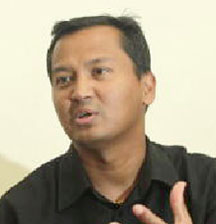SINGAPORE, (Reuters) – Malaysian entrepreneur Matt Chandran wants to revive the moribund post-mortem by replacing the scalpel with a scanner and the autopsy slab with a touchscreen computer.

He believes his so-called digital autopsy could largely displace the centuries-old traditional knife-bound one, speeding up investigations, reducing the stress on grieving families and placating religious sensibilities.
He is confident there’s money in what he calls his Autopsy as a Service, and hopes to launch the first of at least 18 digital autopsy facilities in Britain in October, working closely with local authorities.
Around 70 million people die each year, says Chandran, and around a tenth of those deaths are medico-legal cases that require an autopsy. “That’s a huge number, so we’re of the view that this is a major line of services that is shaping up around the world,” he said in an interview.
The poor common perception of autopsies has undermined their commercial appeal. “Unfortunately, because the process of the post-mortem is seen as gruesome, one tends to ignore that,” says Chandran.
Humans have been cutting each other open for at least 3,000 years to learn more about death, but the autopsy has never been widely embraced outside TV crime dramas. Surgeons in 18th century Britain, for example, robbed graves for corpses to dissect, some even commissioning murders when supplies dried up.
By the 1950s, the autopsy was at its zenith, with pathologists performing post-mortems on more than 60 percent of those who died in the United States and Europe – helping uncover more than 80 major, and perhaps thousands of minor, medical conditions.
But the number of autopsies has fallen steadily: Today, fewer than 20 percent of deaths in Britain are followed by autopsy, and most of these are ordered by coroners in cases where the cause of death is unclear or disputed.
The fall has been blamed on a growing distaste for a procedure regarded by some as crude and outdated – a feeling fanned by the public discovery in Britain in 1999 that medical institutions had been retaining organs and tissue after post-mortems for decades.
DIGITAL MAKEOVER
Chandran, 45, wants to change all this by simply connecting his company iGene’s 3D imaging software to any standard medical CT or MRI scanner. An expert can then inspect the virtual cadaver in 3D, removing layers of cloth, skin and bone with a mouse or by gestures on a tabletop touchscreen.
The advantages, Chandran says, are considerable.
The digital evidence remains intact and can be reviewed; experts can more easily spot and identify fracture, foreign objects such as bullets, and the tips of knife wounds; and grieving families can swiftly learn how their loved ones died and without having to cut open the body.
iGene isn’t the first to run a scanner over a corpse. Radio-logy has been used on skulls for 30 years, and Israel first introduced the concept of a virtual autopsy in 1994. The U.S. military started conducting CT scans of all soldiers killed in Iraq and Afghanistan in 2004 in addition to traditional autopsies.




